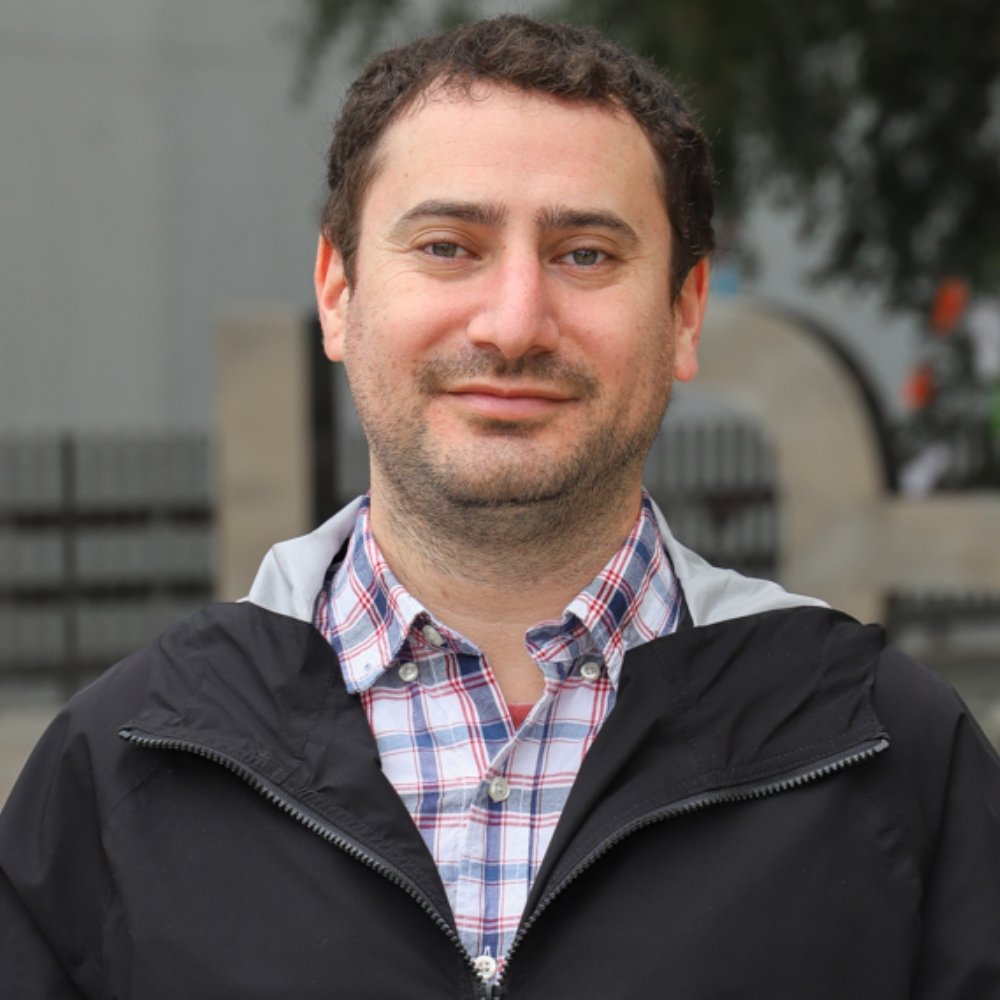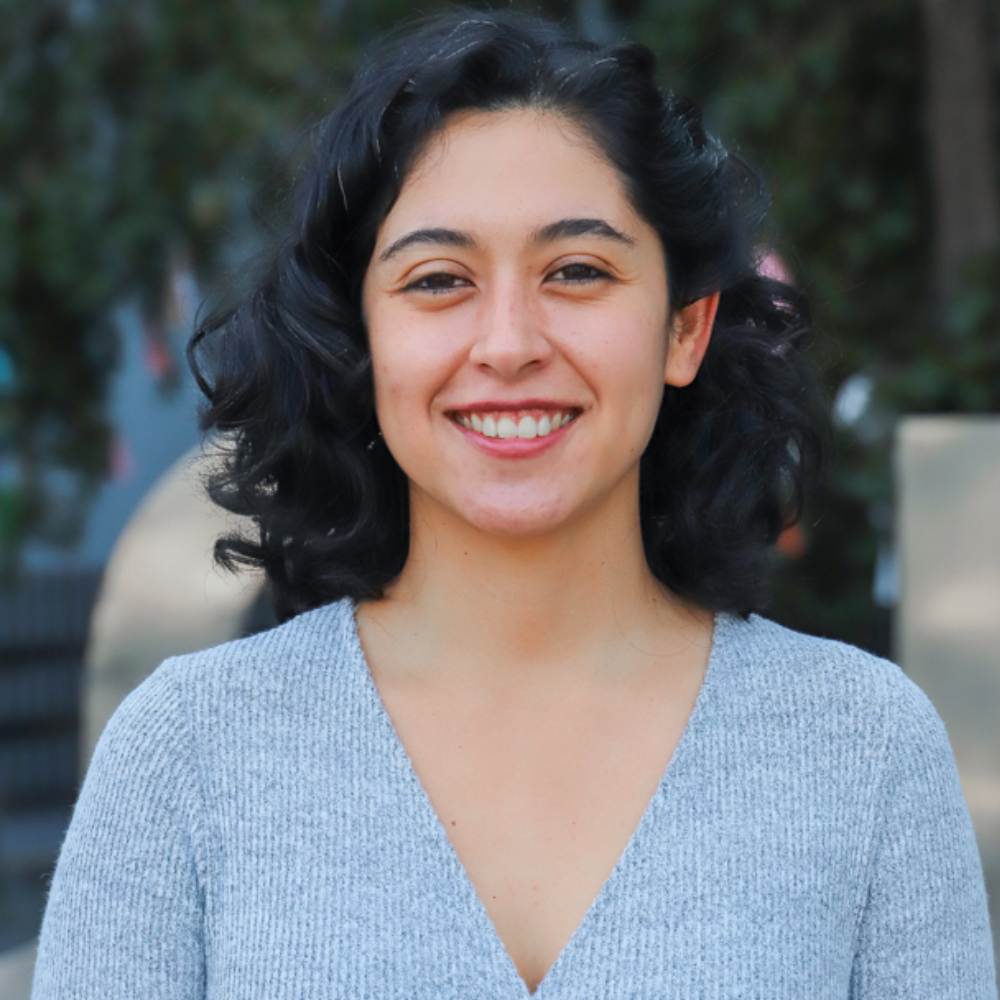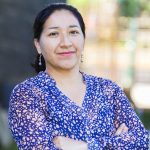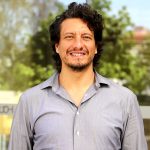Proyectos
- 1231401
- Abril 2024 - Marzo 2027
AdjudicadoAgencia Nacional de Investigación y Desarrollo - ANID
A Biopsychosocial Approach for Frailty Intervention: Uncovering a Circulating microRNA Biomarker Panel Using an Omics-Based Machine Learning Approach
[vc_section el_class="container mx-auto align-items-center circle--pattern" css=".vc_custom_1648956589196{padding-top: 3rem !important;}"][vc_row el_class="pb-5"][vc_column][vc_wp_custommenu nav_menu="6"][uoh_breadcrumb_component automatic_breadcrumb="true"][uoh_title_component title_dropdown="big" title_decorator="true"]{{title}}[/uoh_title_component][vc_column_text css=""]Frailty is increasingly becoming an important public health challenge worldwide because it is associated with older age, and with adverse outcomes such as reduced quality of life, increased mortality rates, hospitalizations, falls, depression, and dementia. Frailty is defined as dynamic state affecting an individual who experiences losses in one or more domains of human functioning (physical, psychological, social) that are caused by the influence of a range of variables, and which increases the risk of adverse outcomes. This more integral conceptual definition promotes the collaboration of scientists, social and behavioral professionals as well as clinicians from diverse specialties. In this proposal an interdisciplinary group (Biochemistry, Geriatric, Occupational Therapist, Kinesiologist, social worker, bioengineer, statistician among others) aims to evaluate frailty in Chile with a biopsychosocial approach with the final purpose to identify and manage frailty while taking into consideration all the dimensions. Additionally, we aim to design a multidomain personalized person-base intervention for a healthy aging that can uncover a circulating microRNA biomarker panel that can allow an early-detection of frailty, leading to a new multidimensional geriatric assessment. We propose the following hypothesis: A personalized multidimensional training program reduces the frailty prevalence, increasing adherence and participation in the program among community-living older adults. This intervention will be paralleled by a distinctive miRNA profile reflecting the multiple domains of frailty, as well as improvements in diverse psychosocial traits.[/vc_column_text][/vc_column][/vc_row][/vc_section][vc_section css=".vc_custom_1649209804184{background-color: #f6faff !important;}" el_class="p-md-0 pt-md-5"][vc_row el_class="container mx-auto align-items-center p-md-0 pt-5"][vc_column el_class="p-0"][/vc_column][/vc_row][/vc_section][vc_section css=".vc_custom_1649210787516{background-color: #f6faff !important;}" el_class="p-md-0 pt-md-5 pb-md-5"][vc_row el_class="container mx-auto align-items-center"][vc_column][/vc_column][/vc_row][/vc_section]
Co-Investigador/a
- FIC400590730
- Abril 2024 - Marzo 2027
En EjecuciónGobierno Regional - GORE
FIC-Editorial cooperativa para la publicación de materiales educativos lúdicos, de base científica y carácter inclusivo
[vc_section el_class="container mx-auto align-items-center circle--pattern" css=".vc_custom_1648956589196{padding-top: 3rem !important;}"][vc_row el_class="pb-5"][vc_column][vc_wp_custommenu nav_menu="6"][uoh_breadcrumb_component automatic_breadcrumb="true"][uoh_title_component title_dropdown="big" title_decorator="true"]{{title}}[/uoh_title_component][vc_column_text css=""]Objetivo general: Instalar una editorial cooperativa en la región de OHiggins sustentada a partir de la comercialización de productos y servicios educativos desarrollados en base a evidencia científica, que permitan implementar el aprendizaje basado en juegos y que consideran la diversidad del aula. Esta propuesta incluye la instalación de un laboratorio de prototipado y producción, además del desarrollo de un paquete de productos y servicios educativos cuya comercialización permite sustentar la editorial cooperativa.
5.4.1. Objetivo Específico 1 (Editorial Cooperativa)
Coordinar una red de emprendedores del área educativa para establecer una editorial cooperativa para la Región de OHiggins para desarrollar y comercializar productos y servicios educativos lúdicos, de base científica y carácter inclusivo. Funciona bajo un modelo de cooperativa cuyos miembros son emprendedores localizados en la región de OHiggins con interés en innovación educativa, trabajando bajo el principio de ayuda mutua.
5.4.2. Objetivo Específico 2 (Diagnóstico de Productos)
Diagnosticar las necesidades de productos y servicios educativos para promover la calidad de los aprendizajes en los primeros cursos de educación básica en la región de OHiggins. Identifica tópicos en matemáticas y lenguaje que presentan dificultades al momento de su enseñanza, describe la diversidad de estudiantes en escuelas municipales e indaga métodos de comercialización comunes.
5.4.3. Objetivo Específico 3 (Laboratorio de prototipado y Manufactura)
Instalar en la Universidad de OHiggins un laboratorio para elaborar prototipos de juegos de mesa educativos y producirlos en pequeña escala. Se adquiere maquinaria, equipamientos e insumos necesarios para que el Laboratorio de Aprendizaje Matemático (LAM) pueda prototipar juegos de mesa y, en conjunto con la Fábrica Digital OHiggins (FabLab), producirlos con alta calidad y en pequeña escala de manera eficiente (30-100 ejemplares).
5.4.4. Objetivo Específico 4 (Desarrollo de Productos)
Realizar el diseño, prototipado y manufactura de un paquete de productos educativos para fortalecer las áreas de matemática y lenguaje en los primeros años de educación básica. Diseñados en base a ciencias del aprendizaje, estos productos permiten desarrollar aprendizajes en base a juegos y actividades lúdicas considerando la diversidad de estudiantes en el aula.
5.4.5. Objetivo Específico 5 (Capacitación y Servicios)
Generar un programa de capacitación para certificar a los emprendedores educativos para que provean servicios que acompañan a los productos educativos ofrecidos por la editorial. Este programa certifica que el emprendedor es experto en la aplicación de los productos educativos desarrollados. Este certificado habilita a los miembros de la editorial para ofrecer estos servicios en el mercado educativo.[/vc_column_text][/vc_column][/vc_row][/vc_section][vc_section css=".vc_custom_1649209804184{background-color: #f6faff !important;}" el_class="p-md-0 pt-md-5"][vc_row el_class="container mx-auto align-items-center p-md-0 pt-5"][vc_column el_class="p-0"][/vc_column][/vc_row][/vc_section][vc_section css=".vc_custom_1649210787516{background-color: #f6faff !important;}" el_class="p-md-0 pt-md-5 pb-md-5"][vc_row el_class="container mx-auto align-items-center"][vc_column][/vc_column][/vc_row][/vc_section]
Co-Investigador/a
- 1241626
- Abril 2024 - Marzo 2027
En EjecuciónAgencia Nacional de Investigación y Desarrollo - ANID
EPIGENOMIC PROGRAMMING IN THE EARLY FETAL BLOOD-BRAIN BARRIER BY GESTATIONAL HYPOXIA: CONSEQUENCES FOR THE NEURO-ENDOTHELIAL LIFESPAN.
EPIGENOMIC PROGRAMMING IN THE EARLY FETAL BLOOD-BRAIN BARRIER BY GESTATIONAL
HYPOXIA: CONSEQUENCES FOR THE NEURO-ENDOTHELIAL LIFESPAN.
- 1241542
- Abril 2024 - Marzo 2027
AdjudicadoAgencia Nacional de Investigación y Desarrollo - ANID
Measuring and describing Stoneley waves propagating in incompressible soft solids: an approximation to brain waves biome-chanics
[vc_section el_class="container mx-auto align-items-center circle--pattern" css=".vc_custom_1648956589196{padding-top: 3rem !important;}"][vc_row el_class="pb-5"][vc_column][vc_wp_custommenu nav_menu="6"][uoh_breadcrumb_component automatic_breadcrumb="true"][uoh_title_component title_dropdown="big" title_decorator="true"]{{title}}[/uoh_title_component][vc_column_text css=""]Overview: Mechanical wave propagation physics is related to traumatic brain injury mechanisms. For instance, nonlinear shear waves can form in the brain progressively with propagation, amplifying the acceleration locally. This phenomenon is compatible with axonal brain injury in which the lesions are localized far from the impact region. Within the brain, not only shear waves propagate. Especially when considering the brain is full of folds and surfaces, including the gray-white matter interface, which can be seen in Fig. 1. The abundance of interfaces or surfaces makes us hypothesize that surface waves might be crucial for describing the biomechanics of traumatic brain injury. The surface waves are named after the nature of the interface. A wave propagating in a solid-vacuum interface is known as a Rayleigh wave, a wave propagating in a solid-fluid interface is known as a Scholte wave, and a wave propagating in a solid-solid interface is known as a Stoneley wave. This last might propagate within an interface formed by two types of soft tissue. An example of this is the interfaces formed by the white and gray matter in the brain (see Fig. 1). Surface waves, although confined to a surface, can penetrate up to a wavelength. In the context of soft tissues, the typical frequencies of elastic waves that propagate are in the range of 10 to 300 Hz. At these frequencies, the wavelengths are on the order Figure 1: Section of a temporal
of centimeters, creating the necessity of studying these waves at brain lobe. Image obtained from depth. Surface waves are not explored sufficiently in incompressible soft the visible human project [1]. solids yet. We recently measured Scholte waves at depth in these materials. However, we are not aware of measurements of Stoneley waves at depth in incompressible soft solids like brain matter or gelatin. The lack
of this experimental evidence is due to the challenges of measuring deformation in opaque materials without disrupting the medium. Thus, the general objective of this proposal is to detect, describe and characterize the propagation of Stoneley waves in interfaces formed by two incompressible tissue-mimicking materials using Ultrafast Ultrasound elastography-related techniques.
Methodology: Advanced ultrasound imaging techniques implemented on a highly customized ultrasound imaging platform designed for high frame-rate imaging will be used to characterize fundamental Stoneley wave physics propagating at the interfaces between two soft solids. We first will perform experiments in flats and simple interfaces to obtain the parameter space (shear modulus, density, and prestress) in which planar Stoneley waves exist. Then, we will explore the effects of the bonding condition between the two mediums on the dispersion relation. Third, we will investigate the interaction of the shape of the interface on the wave propagation, and lastly, we will intend to propagate Stonely waves into 3D inclusions. These observations will be achieved with a number of steps that integrate advancements in ultrasound imaging, algorithms that measure the deformation, and modeling. Custom two-dimensional and three-dimensional imaging sequences, designed for displacement tracking, will be implemented for a dedicated Linear and Matrix array transducer that has 128 or 1024 elements and can reach a spatial resolution of 200microns at a very high framerate in the order of 10000 frames per second (2D or 3D frames respectively).
Expected results: The results of this proposal will elucidate the conditions that the two soft solids need to propagate Stoneley waves. These conditions refer to the combination of mechanical properties of the materials, such as shear modulus and density, and the prestress field needed. We expect to establish the effect that the bonding condition between the two soft solids has on the nature of the Stoneley wave. In particular, we will monitor how the Stoneley wave speed and dispersion change with different bonding conditions. We believe this phenomenology has implications in imaging technology, tumor diagnosis, and brain injury biomechanics.[/vc_column_text][/vc_column][/vc_row][/vc_section][vc_section css=".vc_custom_1649209804184{background-color: #f6faff !important;}" el_class="p-md-0 pt-md-5"][vc_row el_class="container mx-auto align-items-center p-md-0 pt-5"][vc_column el_class="p-0"][/vc_column][/vc_row][/vc_section][vc_section css=".vc_custom_1649210787516{background-color: #f6faff !important;}" el_class="p-md-0 pt-md-5 pb-md-5"][vc_row el_class="container mx-auto align-items-center"][vc_column][/vc_column][/vc_row][/vc_section]
Investigador/a Responsable
- 1241626
- Abril 2024 - Diciembre 2026
AdjudicadoAgencia Nacional de Investigación y Desarrollo - ANID
EPIGENOMIC PROGRAMMING IN THE EARLY FETAL BLOOD-BRAIN BARRIER BY GESTATIONAL HYPOXIA: CONSEQUENCES FOR THE NEURO-ENDOTHELIAL LIFESPAN
[vc_section el_class="container mx-auto align-items-center circle--pattern" css=".vc_custom_1648956589196{padding-top: 3rem !important;}"][vc_row el_class="pb-5"][vc_column][vc_wp_custommenu nav_menu="6"][uoh_breadcrumb_component automatic_breadcrumb="true"][uoh_title_component title_dropdown="big" title_decorator="true"]{{title}}[/uoh_title_component][vc_column_text css=""]The proposal focuses on understanding the neuro-vascular aging mechanisms associated with alterations in fetal growth by intrauterine hypoxia using molecular biology and physiology as an area.
The aim of the study is to demonstrate that impaired fetal growth conditions are associated with epigenetic programming of aging-related DNA methylation, chromatin remodeling, and miRNA-omic profile of junctional complex genes in the neuroendothelium, which can alter BBB integrity and permeability, increasing cerebral damage which impacts the juvenile and adulthood neurocognitive function.[/vc_column_text][/vc_column][/vc_row][/vc_section][vc_section css=".vc_custom_1649209804184{background-color: #f6faff !important;}" el_class="p-md-0 pt-md-5"][vc_row el_class="container mx-auto align-items-center p-md-0 pt-5"][vc_column el_class="p-0"][/vc_column][/vc_row][/vc_section][vc_section css=".vc_custom_1649210787516{background-color: #f6faff !important;}" el_class="p-md-0 pt-md-5 pb-md-5"][vc_row el_class="container mx-auto align-items-center"][vc_column][/vc_column][/vc_row][/vc_section]
Co-Investigador/a
- 1220797
- Abril 2024 - Marzo 2028
En EjecuciónAgencia Nacional de Investigación y Desarrollo - ANID
Discursos de odio en redes sociales: Una aproximación interdisciplinar para comprender el fenómeno y elaborar propuestas educomunicativas que fomenten la formación de nuevas ciudadanías
Los tiempos actuales han facilitado nuevos medios de expresión e interacción como son las redes sociales. Estas plataformas, desde unos orígenes que bien podrían definirse como centrados en el entretenimiento, la comunicación interpersonal y la puesta en común de nuestra imagen e intereses, han pasado a convertirse en arenas de debates polarizados y nada edificantes.
En este escenario, nos parece necesario preguntarnos: ¿cómo funciona la producción y circulación cross-plataforma de discursos de odio en las redes sociales chilenas en los últimos años? Para obtener una respuesta, confiamos en que una aproximación interdisciplinar emprendida por un equipo de comunicadores, lingüistas y cientistas de datos puede proporcionar una mirada más completa y compleja sobre este problema. Nuestro objetivo general es comprender el funcionamiento cross-plataforma de los discursos de odio producidos y puestos en circulación en las redes sociales en Chile a partir de las tendencias informativas más relevantes entre 2015 y 2023. Para ello requerimos: 1) caracterizar cuantitativa y cualitativamente los tipos de discursos de odio producidos y puestos en circulación en las redes sociales en Chile a partir de las tendencias informativas más relevantes entre 2015 y 2023; 2) identificar las cuentas de origen y diseminación que hacen posible tanto la producción como la circulación cross-plataforma de los tipos de discursos de odio y sus comentarios en las redes sociales en Chile, y; 3) analizar cualitativamente las estrategias lingüísticas y semióticas usadas sistemáticamente en la producción de los tipos de discursos de odio y sus comentarios. Además, y no menos importante, proponemos diseñar un kit de recursos digitales con ejemplos y recomendaciones para fomentar estrategias de formación ciudadana que ayuden a los/as usuarios/as de estas redes sociales a leer críticamente los discursos de odio y proyectar acciones para confrontarlos o neutralizarlos. Si bien esta es una acción de divulgación científica, nos parece necesario dar un pequeño paso que proyecte incluso futuras investigaciones aplicadas.
Co-Investigador/a
- ID: 950106 Resolución: 5457-2023
- Abril 2024 - Diciembre 2028
En EjecuciónSeCyT
Los procesos de enseñanza, integración curricular, evaluación y acreditación en salud en grado y posgrado y su vinculación con la trayectoria académica y actividad docente
[vc_section el_class="container mx-auto align-items-center circle--pattern" css=".vc_custom_1648956589196{padding-top: 3rem !important;}"][vc_row el_class="pb-5"][vc_column][vc_wp_custommenu nav_menu="6"][uoh_breadcrumb_component automatic_breadcrumb="true"][uoh_title_component title_dropdown="big" title_decorator="true"]{{title}}[/uoh_title_component][vc_column_text css=""]Analizar los procesos de enseñanza, integración curricular, evaluación y acreditación en carreras del área de salud en grado y posgrado y su relación con la trayectoria académica de los estudiantes y la actividad docente en Argentina y Chile.[/vc_column_text][/vc_column][/vc_row][/vc_section][vc_section css=".vc_custom_1649209804184{background-color: #f6faff !important;}" el_class="p-md-0 pt-md-5"][vc_row el_class="container mx-auto align-items-center p-md-0 pt-5"][vc_column el_class="p-0"][/vc_column][/vc_row][/vc_section][vc_section css=".vc_custom_1649210787516{background-color: #f6faff !important;}" el_class="p-md-0 pt-md-5 pb-md-5"][vc_row el_class="container mx-auto align-items-center"][vc_column][/vc_column][/vc_row][/vc_section]
Patrocinante
- FIC400590730
- Abril 2024 - Marzo 2027
En EjecuciónGobierno Regional - GORE
FIC-Editorial cooperativa para la publicación de materiales educativos lúdicos, de base científica y carácter inclusivo
[vc_section el_class="container mx-auto align-items-center circle--pattern" css=".vc_custom_1648956589196{padding-top: 3rem !important;}"][vc_row el_class="pb-5"][vc_column][vc_wp_custommenu nav_menu="6"][uoh_breadcrumb_component automatic_breadcrumb="true"][uoh_title_component title_dropdown="big" title_decorator="true"]{{title}}[/uoh_title_component][vc_column_text css=""]Objetivo general: Instalar una editorial cooperativa en la región de OHiggins sustentada a partir de la comercialización de productos y servicios educativos desarrollados en base a evidencia científica, que permitan implementar el aprendizaje basado en juegos y que consideran la diversidad del aula. Esta propuesta incluye la instalación de un laboratorio de prototipado y producción, además del desarrollo de un paquete de productos y servicios educativos cuya comercialización permite sustentar la editorial cooperativa.
5.4.1. Objetivo Específico 1 (Editorial Cooperativa)
Coordinar una red de emprendedores del área educativa para establecer una editorial cooperativa para la Región de OHiggins para desarrollar y comercializar productos y servicios educativos lúdicos, de base científica y carácter inclusivo. Funciona bajo un modelo de cooperativa cuyos miembros son emprendedores localizados en la región de OHiggins con interés en innovación educativa, trabajando bajo el principio de ayuda mutua.
5.4.2. Objetivo Específico 2 (Diagnóstico de Productos)
Diagnosticar las necesidades de productos y servicios educativos para promover la calidad de los aprendizajes en los primeros cursos de educación básica en la región de OHiggins. Identifica tópicos en matemáticas y lenguaje que presentan dificultades al momento de su enseñanza, describe la diversidad de estudiantes en escuelas municipales e indaga métodos de comercialización comunes.
5.4.3. Objetivo Específico 3 (Laboratorio de prototipado y Manufactura)
Instalar en la Universidad de OHiggins un laboratorio para elaborar prototipos de juegos de mesa educativos y producirlos en pequeña escala. Se adquiere maquinaria, equipamientos e insumos necesarios para que el Laboratorio de Aprendizaje Matemático (LAM) pueda prototipar juegos de mesa y, en conjunto con la Fábrica Digital OHiggins (FabLab), producirlos con alta calidad y en pequeña escala de manera eficiente (30-100 ejemplares).
5.4.4. Objetivo Específico 4 (Desarrollo de Productos)
Realizar el diseño, prototipado y manufactura de un paquete de productos educativos para fortalecer las áreas de matemática y lenguaje en los primeros años de educación básica. Diseñados en base a ciencias del aprendizaje, estos productos permiten desarrollar aprendizajes en base a juegos y actividades lúdicas considerando la diversidad de estudiantes en el aula.
5.4.5. Objetivo Específico 5 (Capacitación y Servicios)
Generar un programa de capacitación para certificar a los emprendedores educativos para que provean servicios que acompañan a los productos educativos ofrecidos por la editorial. Este programa certifica que el emprendedor es experto en la aplicación de los productos educativos desarrollados. Este certificado habilita a los miembros de la editorial para ofrecer estos servicios en el mercado educativo.[/vc_column_text][/vc_column][/vc_row][/vc_section][vc_section css=".vc_custom_1649209804184{background-color: #f6faff !important;}" el_class="p-md-0 pt-md-5"][vc_row el_class="container mx-auto align-items-center p-md-0 pt-5"][vc_column el_class="p-0"][/vc_column][/vc_row][/vc_section][vc_section css=".vc_custom_1649210787516{background-color: #f6faff !important;}" el_class="p-md-0 pt-md-5 pb-md-5"][vc_row el_class="container mx-auto align-items-center"][vc_column][/vc_column][/vc_row][/vc_section]
Investigador/a Responsable
- #635276
- Abril 2024 - Enero 2024
En EjecuciónAgencia Nacional de Investigación y Desarrollo - ANID
Effect of microplastics on soils from different land use types: assessing their interaction with metal(loid)s and effects on soil microbial communities under realistic conditions
[vc_section el_class="container mx-auto align-items-center circle--pattern" css=".vc_custom_1648956589196{padding-top: 3rem !important;}"][vc_row el_class="pb-5"][vc_column][vc_wp_custommenu nav_menu="6"][uoh_breadcrumb_component automatic_breadcrumb="true"][uoh_title_component title_dropdown="big" title_decorator="true"]{{title}}[/uoh_title_component][vc_column_text css=""]Microplastics (MPs) are plastic particles that range in size from 0.1 μm to 5 mm. They have received widespread attention in the global environmental science community due to their potential effects on living organisms, ecosystem pollution, low recycling rate, and interaction with organic and inorganic contaminants. Although much research has been focused on MPs in aquatic ecosystems, terrestrial ecosystems have been largely overlooked. Consequently, there is still scarce knowledge on the sources and occurrence of MPs in soils. After being deposited in soil, MPs undergo an aging process that involves the breakdown of their polymeric chains, which promotes the interaction between MPs and organic and inorganic contaminants. This process further increases the toxicity of MPs when they sorb pollutants from the environment, which can be transported to water bodies and living organisms. However, research regarding the aging of MPs and their toxicity is needed since previous studies do not consider realistic soil conditions. Additionally, interactions between MPs and pollutants have been primarily studied for conventional MPs, with scarce research on such topics for degradable MPs, especially concerning interactions with metal(loid)s. In general, the interaction of degradable MPs with other contaminants and their further toxicity have been overlooked.
MPs have been shown to negatively affect some physical, chemical, and biological soil properties. However, results varied between studies, which have been associated with the type and shape of MPs, soil aggregate structure, porosity, water and oxygen availability, among others. More research is needed to confirm such relationships in soils. Previous studies have been mainly performed in Europe and Asia, with scarce research in Latin America. In Chile, only one study has been conducted on MPs in soils at field conditions, with other two studies regarding the effect of MPs and metals on soil biochemical properties under controlled environments. Therefore, considerable efforts should be taken to study MPs in Chilean soils. Thus, this study aims to address these gaps by considering some realistic approaches that are missing from current research on MPs. Specifically, this research will: 1) assess MPs in soils from different land uses and examine their association with soil properties; 2) evaluate degradable MPs; 3) study the ageing and adsorption capability of different MPs to metal(loid)s in soils; and 4) investigate the interactive effect of MPs and metal(loid)s under realistic conditions (including a real dose of MPs and metal(loid)s, temperature fluctuations, and soils from different land use types). By taking these steps, this study will provide novel insights into the occurrence of MPs in Chilean soils and shed light on the dynamics of soil microbial communities in the presence of MPs and metal(loid)s.
Based on the above, the proposed research aims to evaluate the effect of different types of MPs and their interaction with metal(loid)s on the soil community structure and functionality from different land use types under realistic conditions. The hypothesis is that MPs will negatively affect soil microbiome structure and functionality due to changes in soil physicochemical properties, which will be moderated by changes in the type, doses, ageing of MPs and their interactions with metal(loid)s in soil from different land type uses. This proposal will be conducted in the OHiggins Region (VI) of Chile. Firstly, in Phase 1, six localities from different land use types will be selected: an urban wetland, agricultural field, and sclerophyll forest. Soil samples will be taken to quantify and characterize the types of MPs in soil. Secondly, in Phase 2, the evaluation of different types of aging of MPs (conventional and degradable) on chemical characteristics of such particles will be performed, which is based on the ability of MPs as carriers of metal(loid)s. With information and soils obtained from Phase 1, a realistic experimental approach will be performed in the Phase 3. These include the evaluation of aged MPs (degradable and non-degradable) on soil physicochemical and biochemical properties, and the study of degradable and non-degradable aged MPs with metal(loid)s on the functionality, structure, and co-occurrence patterns of soil microbial communities. These phases are designed to be performed over three years. This is the first study focused on the evaluation the effect of MPs and metal(loid)s on microbial communities of soils from different land use types in Chile.[/vc_column_text][/vc_column][/vc_row][/vc_section][vc_section css=".vc_custom_1649209804184{background-color: #f6faff !important;}" el_class="p-md-0 pt-md-5"][vc_row el_class="container mx-auto align-items-center p-md-0 pt-5"][vc_column el_class="p-0"][/vc_column][/vc_row][/vc_section][vc_section css=".vc_custom_1649210787516{background-color: #f6faff !important;}" el_class="p-md-0 pt-md-5 pb-md-5"][vc_row el_class="container mx-auto align-items-center"][vc_column][/vc_column][/vc_row][/vc_section]
Responsable Alterno
- ID: 950106 Resolución: 5457-2023
- Abril 2024 - Diciembre 2028
En EjecuciónSeCyT
Los procesos de enseñanza, integración curricular, evaluación y acreditación en salud en grado y posgrado y su vinculación con la trayectoria académica y actividad docente
[vc_section el_class="container mx-auto align-items-center circle--pattern" css=".vc_custom_1648956589196{padding-top: 3rem !important;}"][vc_row el_class="pb-5"][vc_column][vc_wp_custommenu nav_menu="6"][uoh_breadcrumb_component automatic_breadcrumb="true"][uoh_title_component title_dropdown="big" title_decorator="true"]{{title}}[/uoh_title_component][vc_column_text css=""]Analizar los procesos de enseñanza, integración curricular, evaluación y acreditación en carreras del área de salud en grado y posgrado y su relación con la trayectoria académica de los estudiantes y la actividad docente en Argentina y Chile.[/vc_column_text][/vc_column][/vc_row][/vc_section][vc_section css=".vc_custom_1649209804184{background-color: #f6faff !important;}" el_class="p-md-0 pt-md-5"][vc_row el_class="container mx-auto align-items-center p-md-0 pt-5"][vc_column el_class="p-0"][/vc_column][/vc_row][/vc_section][vc_section css=".vc_custom_1649210787516{background-color: #f6faff !important;}" el_class="p-md-0 pt-md-5 pb-md-5"][vc_row el_class="container mx-auto align-items-center"][vc_column][/vc_column][/vc_row][/vc_section]
Co-Investigador/a









